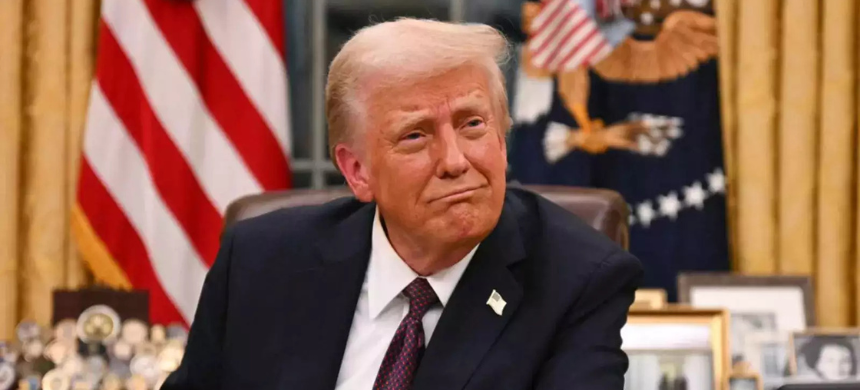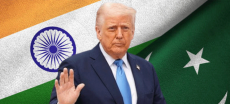In a significant shift in US foreign policy, President Donald Trump announced the lifting of long-standing sanctions on Syria during his visit to the Gulf. The announcement came alongside the sealing of a massive $142 billion arms deal with Saudi Arabia. Speaking in Riyadh, Trump referred to the Kingdom as “our strongest partner,” emphasizing his commitment to strengthening economic ties and boosting investment flows between the United States and Gulf nations.
Trump’s decision to remove the economic embargo on Syria marks a new chapter for the war-torn country, which has been under sanctions for over a decade following the Assad regime’s violent crackdown on opposition forces during the civil war. The former president’s remarks were delivered in the presence of Crown Prince Mohammed bin Salman, who is believed to have played a pivotal role in advocating for the removal of the sanctions.
Syria’s Foreign Minister, Asaad Shibani, welcomed the move as a “new start” for Syria, which has been devastated by 13 years of conflict. The lifting of sanctions comes after the ousting of former President Bashar al-Assad and the formation of a transitional government led by President Ahmed al-Sharaa. Trump is scheduled to meet Sharaa in Riyadh on Wednesday.
Read More: US Senate rejects proposal to sanction ICC over Netanyahu arrest warrant
The sanctions had severely hindered Syria’s reconstruction efforts, leaving much of the country in ruins. Former US Ambassador to Syria, Robert Ford, supported the decision, noting that lifting the sanctions would facilitate essential capital flows from Gulf and Arab nations to help rebuild Syria’s shattered infrastructure.
In addition to the Syria policy shift, Trump’s arms deal with Saudi Arabia is one of the largest in recent years and forms part of a broader economic agreement that could potentially reach $1 trillion in future investments, according to Saudi Crown Prince Mohammed bin Salman.
The trip also bears symbolic significance, harking back to Trump’s first foreign visit as president in 2017, which also began in Riyadh. Trump’s current tour includes stops in Qatar and the UAE, both of which play key roles in the region. As global competition in AI and defense technologies intensifies, Trump’s visit underscores the strengthening of Gulf partnerships.
Prominent business leaders accompanied Trump on his visit, including Elon Musk, Sam Altman of OpenAI, BlackRock CEO Larry Fink, and Nvidia’s Jensen Huang. This delegation highlights the growing connection between Gulf wealth and American technological innovation, particularly in AI.
In a major development, Nvidia announced that it would supply over 18,000 of its latest AI chips to Saudi firm Humain, aligning with the Kingdom’s Vision 2030 initiative to diversify its economy beyond oil.
During his speech, Trump expressed hope that Saudi Arabia would join the Abraham Accords, a US-brokered agreement from his first administration that normalised relations between Israel and several Arab nations. However, Prince Mohammed stated that any such agreement would depend on a “permanent end” to the war in Gaza and the creation of a Palestinian state.
Although Trump briefly touched on the Gaza conflict, he stated that the people of Gaza deserved a “better future,” attributing the ongoing violence to Hamas’s October 7, 2023 attack on Israel.
Trump’s visit contrasts sharply with that of his successor, President Joe Biden, who faced a less welcoming reception in Riyadh in 2022. Biden was criticized for reversing his campaign position that labeled Saudi Arabia a “pariah” state after the murder of journalist Jamal Khashoggi.
Trump’s visit, marked by pomp and pageantry, highlighted his strong relationship with the Saudi royal family and his focus on deal-making rather than diplomatic reproaches. From Riyadh, Trump will continue his tour with visits to Qatar and the UAE. Notably, the UAE has committed to investing $1.4 trillion in the US over the next decade, further cementing the growing economic ties between the US and the Gulf states.











